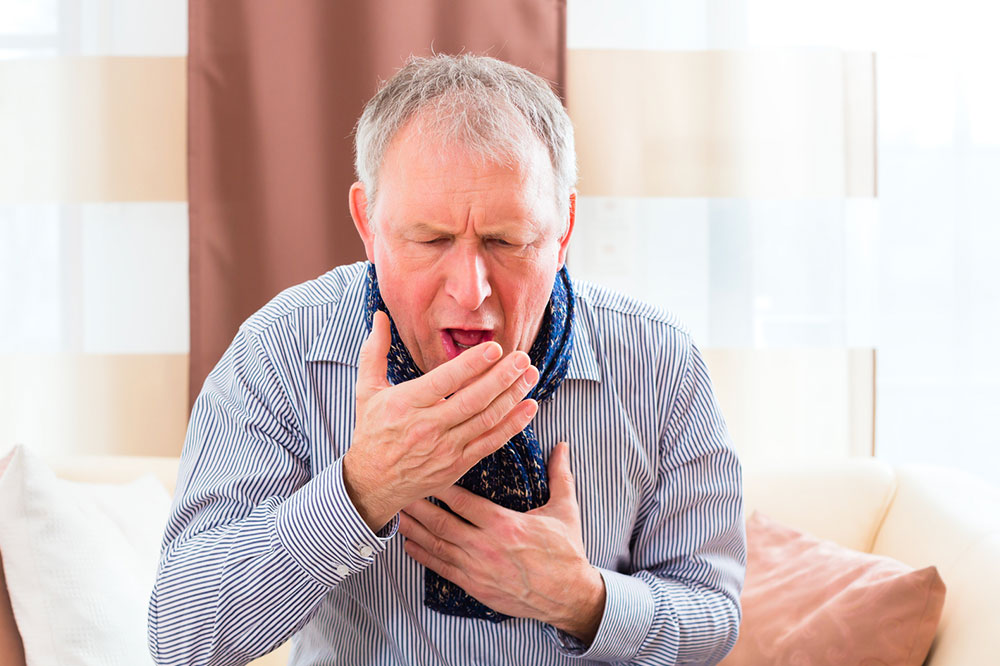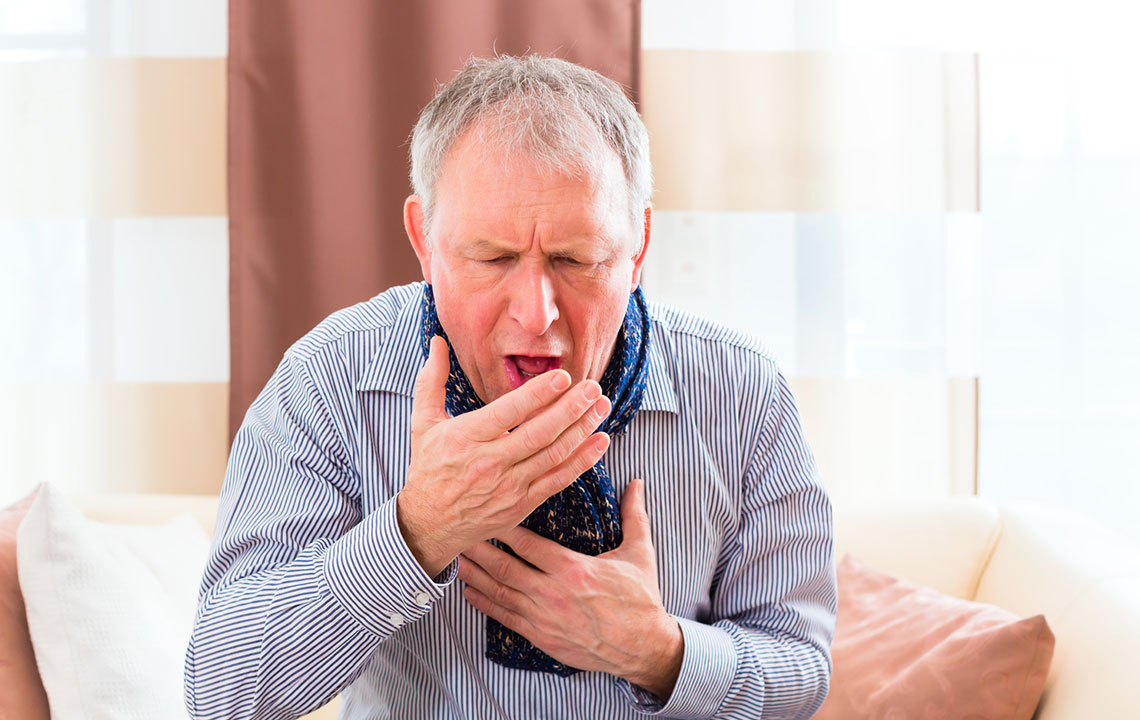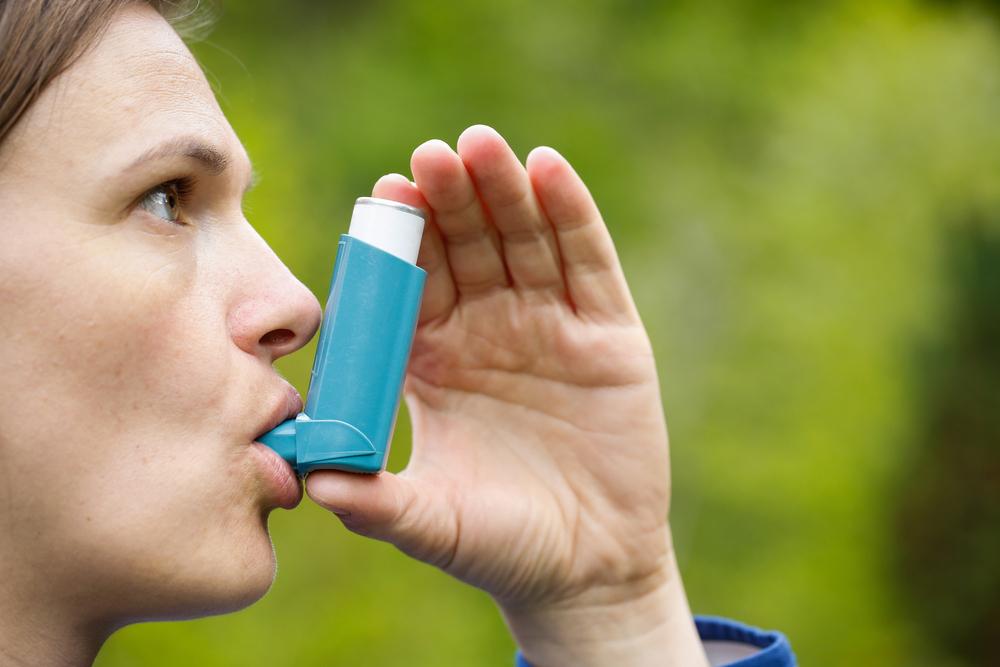Top treatment options that help fight against COPD
Chronic obstructive pulmonary disease (COPD) is an inflammatory disease that affects the lungs by obstructing the airflow. Chronic bronchitis and emphysema are two conditions that play a big role in COPD and they both occur together usually. The main reason for COPD is smoking and the inhalation of other irritating gases. Patients suffering from this chronic lung disease are more prone to cardiac conditions and even cancer. COPD gets worse with time and develops slowly, but treatment is possible.

Symptoms
In most cases, the symptoms of COPD are not very significant or they don’t show up until lung damage has already occurred. They also get worse if the patient has a habit of smoking. Signs and symptoms may vary from person to person too, and here are some common ones you can watch out for:
- Coughing and wheezing
- Shortness of breath
- Chest tightness
- Respiratory infections
- Fatigue and weakness
- Sudden weight loss
- Change in color of sputum
- Swollen ankles, feet, or legs
- Anxiety
- Fluid retention
- Trouble with sleeping
- Intolerance toward cold temperatures
Causes and risk factors
The causes of COPD aren’t the same for any two people. The right COPD treatment plan is determined by observing the symptoms and causes of this condition in a person. That being said, these factors play a pivotal role in causing COPD:
- Smoking
Smoking is one of the most common causes of COPD. People who consume products like cigars, cigarettes, and tobacco pipes can also get affected. Basically, the more smoke you breathe, higher the risk. Even if you are not smoking but live with a smoker, you can get COPD. - Asthma
Patients of asthma who don’t take their treatment seriously can damage their lungs, which can cause COPD. It can worsen if an asthmatic has the habit of smoking. - Pollution
Air pollution can also cause COPD. Chemical fumes, dust, and vapors can irritate and inflame the lungs. Cadmium dust, grain and flour dust, silica dust, welding fumes, and coal dust are very harmful to the lungs. - Genetics
This factor plays a major role in COPD. A defect in the DNA, alpha-1 antitrypsin deficiency , or AAT deficiency can cause COPD. In this condition, the lungs lack adequate proteins required to keep damage at bay.
Treatment options
Depending on the severity of symptoms in a patient, the COPD treatment plan is chalked out. The treatment aims to control symptoms, slow down the progression of the condition, and reduce the risk of complications. COPD treatment options are also planned to improve the quality of life as well. Some of them are
- Quitting smoking
One of the most common COPD treatments is to quit smoking. When a person stops smoking, it prevents the condition from getting worse and reduces problems like breathlessness and other symptoms. But this task is easier said than done and takes time. You can consult your doctor for nicotine replacement products and other medications to get started. Don’t forget to talk about relapses too. If you are a passive smoker, then avoid inhaling second-hand smoke as much as possible. - Medications
After taking care of your habits, certain medications play a major role in COPD treatment. Based on the symptoms, these options are prescribed, some of them are- Bronchodilators
They come in the form of inhalers and help by relaxing the muscles around the airways. Bronchodilators also give you relief from coughing and breathlessness and aid in breathing. Short-acting bronchodilators or long-acting bronchodilators are prescribed depending on the symptoms of the patient. Some short-acting bronchodilators are Albuterol (ProAir HFA, Ventolin HFA, others), Ipratropium (Atrovent HFA), and Levalbuterol (Xopenex). Some long-acting bronchodilators are Aclidinium (Tudorza Pressair), Arformoterol (Brovana), Formoterol (Perforomist), Indacaterol (Arcapta Neoinhaler), Tiotropium (Spiriva), Salmeterol (Serevent), and Umeclidinium (Incruse Ellipta). - Inhaled steroids
These steroids help reduce inflammation in the airways and prevent exacerbations. Inhaled steroids are prescribed only to people who deal with the problem of frequent exacerbations, as it involves some side effects such as bruises, oral infections, and hoarseness. Some inhaled steroids are Fluticasone (Flovent HFA) and Budesonide (Pulmicort Flexhaler). - Combination inhalers
These inhalers combine bronchodilators and inhaled steroids, depending on the symptoms. Some of them are Fluticasone and vilanterol (Breo Ellipta), Fluticasone, umeclidinium and vilanterol (Trelegy Ellipta), Formoterol and budesonide (Symbicort), and Salmeterol and Fluticasone (Advair HFA, Air Duo Digihaler, etc.) - Oral steroids
These medications are helpful for patients who suffer from moderate or severe acute exacerbation, as they prevent worsening of symptoms. However, long-term use of oral steroids can have many side effects, such as diabetes, osteoporosis, weight gain, cataract, and many other infections. - Phosphodiesterase-4 inhibitors
Roflumilast (Daliresp), a phosphodiesterase-4 inhibitor, is suitable for all people who suffer from severe COPD symptoms. It helps by reducing the inflammation in the airway and eases airways as well. - Theophylline
In some cases, when COPD treatment fails or people find the treatment too costly, theophylline (Elixophyllin, Theo-24, Theochron) is prescribed, as it is comparatively affordable and prevents the worsening of symptoms. But some people experience side effects such as nausea, tremor, tachycardia, and headaches. - Antibiotics
Infections, such as influenza, pneumonia, and acute bronchitis can trigger COPD symptoms. So, antibiotics are recommended to prevent the worsening of symptoms. Azithromycin (Zithromax) is one such antibiotic that is prescribed.
- Bronchodilators
- Lung therapies
There are several therapies used as COPD treatment to help people with moderate or severe COPD. Some of them are- Oxygen therapy
When there is insufficient oxygen in the blood, one might need supplemental oxygen. Several devices are available to supply oxygen to the lungs, which are light in weight and portable. Many patients use oxygen therapy while sleeping or doing certain activities, while some need it all the time. You can consult your doctor before going for oxygen therapy. It ensures a better quality of life and adds to your years. - Pulmonary rehabilitation program
As the name suggests, these rehabilitation programs combine education, exercise training, nutrition advice, and counseling. Various specialists will discuss your symptoms, guide you, and will design a program that is suitable for your needs. These programs improve your quality of life and are good for general wellbeing.
- Oxygen therapy
- Surgery
Surgery is the last resort as COPD treatment when medications prove to be insufficient and patients suffer from severe emphysema. Some surgical options are- Lung volume reduction surgery
This surgery involves the removal of small parts of damaged lung tissue from the upper lungs, which occupy extra space in the chest cavity. This makes it easy for the remaining and healthier lung tissue to expand and the diaphragm to work properly. - Lung transplant
When COPD gets severe, in some cases, lung transplantation is the only option left. Lung transplantation improves your breathing ability and helps you to become more active. However, in some cases, people face problems like organ rejection, and they need to be on lifelong immune-suppressing medications. - Bullectomy
In this type of COPD treatment, bullae are removed from the lungs for better air flow. Bullae are large air spaces that develop in the lungs when the air sac walls are destroyed.
- Lung volume reduction surgery
Natural remedies
Other than medications and different types of therapies, natural remedies can also help you to manage COPD symptoms and slow down the progress of the disease. They are
- Try to improve air quality at home
If you are a passive smoker or are surrounded by certain irritants, such as paints, varnishes, chemical-based cleaning products, pesticides, dust, or pet dander, it might trigger COPD symptoms. You can work on improving the air quality by limiting your contact with chemicals in the house, opening windows for ventilation, using air purifiers, regular cleaning and vacuuming of nooks and corners to prevent mold or mildew growth, and changing bed linens more regularly. - Practice breathing exercises
Many patients suffering from COPD find breathing exercises beneficial. These exercises promote a healthy respiratory system. Some examples of breathing exercises are pursed-lip breathing and diaphragm breathing. - Manage stress levels
Mental or emotional stress can weaken the immune system and the body’s ability to fight infections. It also triggers COPD symptoms. Learn to manage stress levels by engaging in activities of your choice, practicing meditation, listening to music, going for walks, and talking to people. - Maintain a healthy weight
Being over- or underweight can be hazardous for COPD patients. To maintain a healthy weight, don’t binge on fatty foods, control portions, and follow a balanced diet full of nutrients. - Work on muscle strengthening
COPD patients often find it difficult to exercise due to breathing problems. But avoiding exercise can only make the symptoms worse. So, consult a doctor and start working out. Gradually, when you gain strength, you can upgrade your difficulty level. Interval training and strength training are some types of workouts used for muscle strengthening without putting too much stress on the heart and lungs. - Try water-based exercises
These exercises are considered ideal for COPD patients, as these exert less stress on the body, making it easier to work out and gain strength. Water-based exercises can also improve your quality of life. - Take supplements
According to doctors, certain supplements can help reduce inflammation and control other symptoms. Supplements of vitamin D, co-enzyme and creatine, and omega-3 fatty acids are good examples. These supplements help energize body cells, reduce inflammation, and clear infections. Supplements of vitamin A, C, and E help improve lung health and should be taken regularly.
Foods to have
Only a healthy body can fight infections effectively and reduce the symptoms of COPD. For a healthy body, one requires good nutrition. Since COPD patients find it difficult to breathe, their calorie requirements are more than an average person. A wholesome diet for COPD patients should include
- Whole grains
Pick high-fiber foods made with whole grains over refined carbohydrates. The more carbs you consume, the more you stress your lungs. Also, a high-carb diet increases carbon dioxide production. Try eating whole wheat, quinoa, millet, rolled oats, rye, buckwheat, bulgur wheat, barley, and corn. - Milk products
Doctors advise COPD patients to consume about 3,300 calories in a day, including five servings of milk or milk products. Go for low-fat milk that takes care of your calorie intake and provides the essential nutrients. Yogurt, cottage cheese, and low-fat cheese can also be taken. - Healthy fats
Always include healthy fats in your diet. Instead of saturated animal fats or hydrogenated fats, choose omega-3 fatty acids and poly- and mono-unsaturated fats. You can have nuts, olive oil, and avocados. - Fruits and vegetables
COPD treatment requires the inclusion of fruits and vegetables in their diet. These foods are loaded with essential nutrients and have inflammation-fighting antioxidants. Many studies have proven that antioxidants and phytochemicals protect your lungs and lower COPD related risks. Fruits like pears, citrus fruits, cherries, pineapples, and grapes can be eaten at least twice a day. You can even steam vegetables and make a quick salad with desired seasonings and dressings. - Beans
Beans, peas, and other legumes are also high in fiber and contain zinc, which is a necessary mineral for a diet plan for COPD treatment. Zinc should be consumed in moderate quantities, as it helps with COPD symptoms. Just boil beans and have them in salads and soups. - Nuts
Nuts with healthy fats can help you maintain a normal Body Mass Index (BMI). Nuts can be enjoyed at breakfast or as evening snacks. You can also go for nut butter as it includes healthy fats to meet your daily calorie requirements. - Lean protein
COPD patients often suffer from protein deficiencies. So, include fish, chicken, eggs, nuts, and dairy in your diet, as all these foods will provide adequate protein to your body. After consulting your doctor, you can even take some protein supplements.
All in all, the right COPD treatment is about taking prescribed medications, making lifestyle changes, and following a balanced and nutritious diet. So, consult your doctor without delay if you notice any signs or symptoms so that a diagnosis can be done at the earliest.




